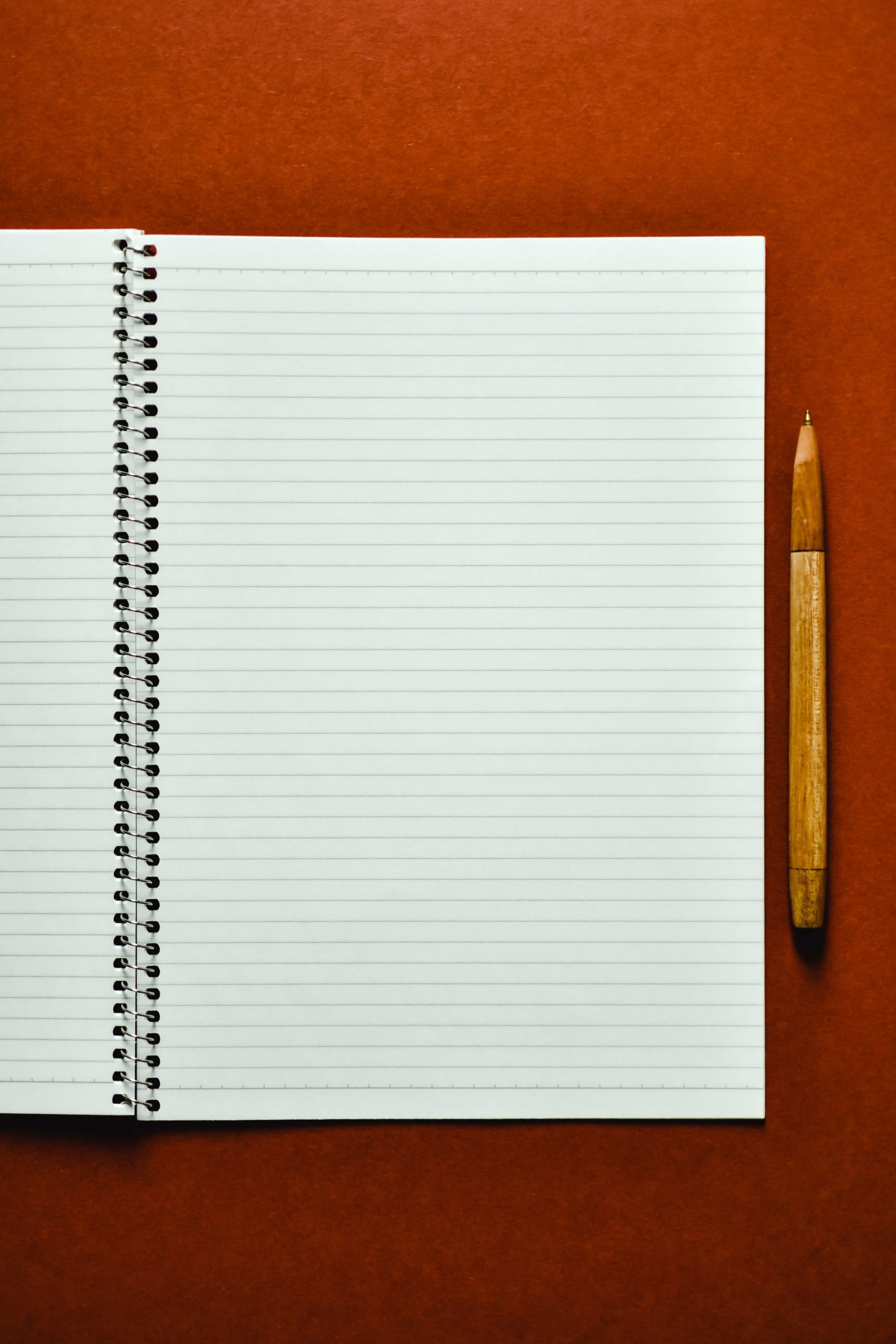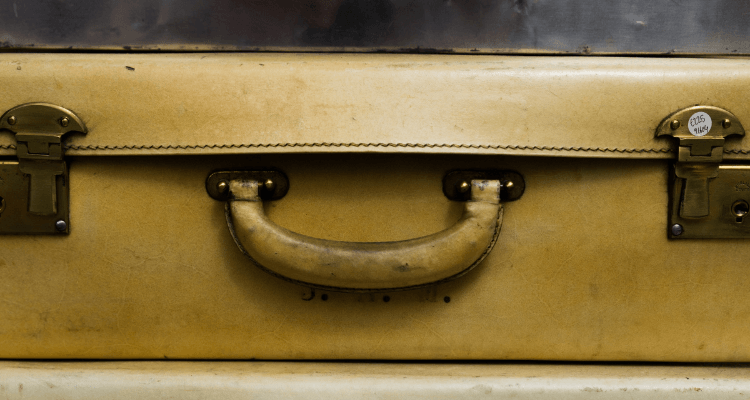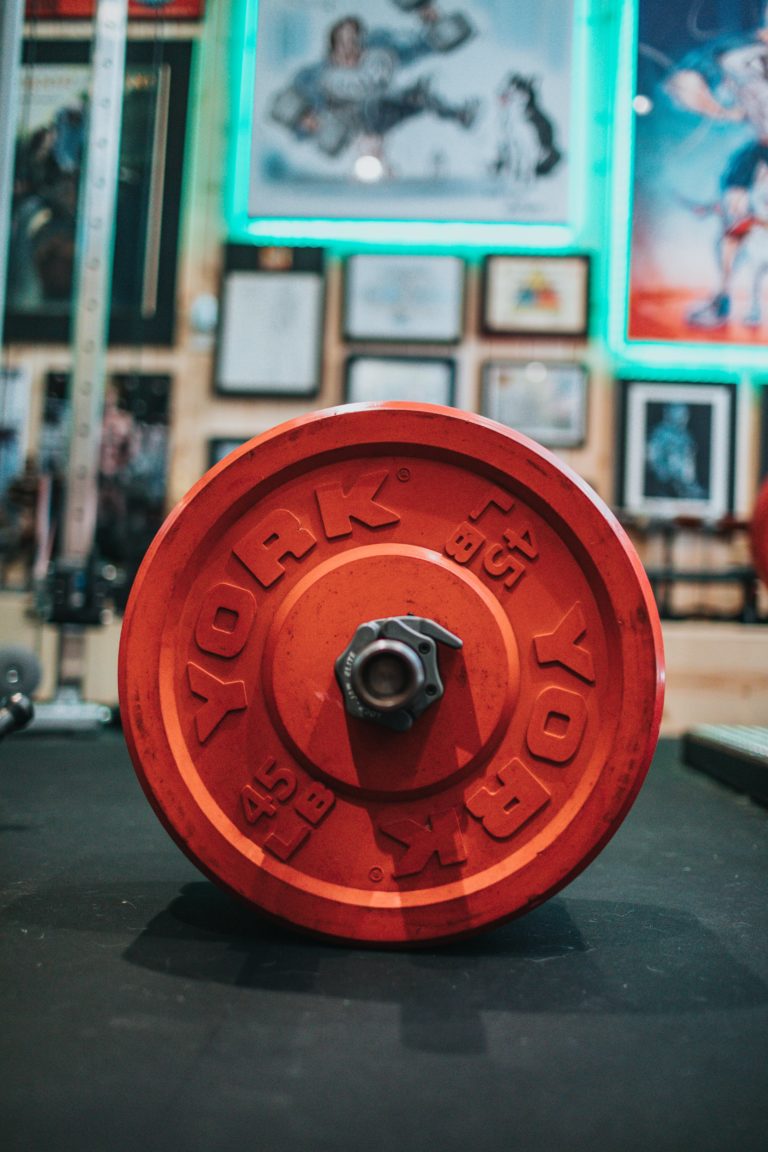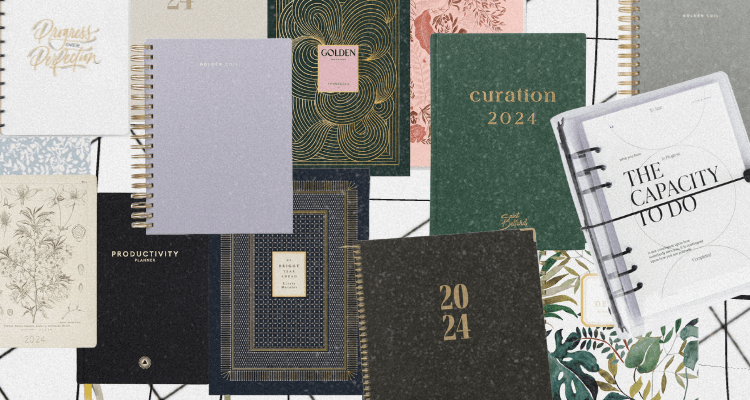Brought to You by an Embarrassing Moment
Okay, I’ve always wanted a writer’s notebook. I’ve used my other mixed-use journals and Google Docs as my temporary writer’s notebook until I’ve been able to buy one recently. Though I have been talking about the importance and benefits of a writer’s notebook on this blog for a while now. So why did it take so long for me to get a notebook that is solely dedicated to my creative and fiction writing?
Well, at first it was just laziness and procrastination. And then after having some experience writing in my other journals I then waited so that I was sure about what I wanted exactly.
You see at first I was just eager to go and get a writer’s notebook. But then I soon found out that I couldn’t just pick out any notebook. I’d have to get one that really suits my writing habits and other needs. After embarrassing myself on a train fumbling with a notebook and pencil I learned that there were some things to consider whenever I go to buy my writer’s notebook.
And some things for you to consider too. Your writer’s notebook should suit you and your stories. So when you’re buying your writer’s notebook don’t forget to consider these 5 main things. I also added some extra considerations for bonus info.
When you’re finished reading through the post leave a comment below and tell me what you think. Have you had any embarrassing writer’s notebook moments? And what are some of the things you look for when buying a writer’s notebook?
Brought to you by my semi-embarrassing moment on the train.
What is a Writer’s Notebook
But first, what is a writer’s notebook?
A writer’s notebook is a literal notebook or journal that writers use to write and develop their stories. The most popular use for a writer’s notebook is jotting down ideas.
Writers often carry their writer’s notebooks around and so with this notebook they could catch inspiration and write down their ideas and such on the go, wherever – whenever.
1. Size
I had gotten on the train one night after a long day of school. The train wasn’t super packed nor was it empty; I could see to the other end of the train car.
I was so inspired to write. That night, if I remember correctly, I was aiming to write in my non-creative writing journal but motivated to write nonetheless. Within seconds I spotted a seat and got comfortable in a spot near the window. I began to pull my notebook out of my bag and immediately I had an issue.
The main issue – The notebook was too big. Two problems came from this.
This was a journal that I usually used at home and didn’t bring outside because I thought it would be a bit of a burden to carry around in my everyday bag. But for this day, my school bag was large enough to slide it in. I thought It would be good to start carrying it around so that I could increase my daily writing.
So what was the problem if my bag was big enough to hold it in?
Problem # 1 – I had to zip my bag all the way open to get it out.
I don’t like to open my bag all the way up on the train ( the MTA, the New York transit system where too many shady and/or dangerous characters are active). God keeps me safe on the train every single day and so I have written on the train before among many other things. But the notebook or journals I’ve used were not as inconvenient as this one was. These other notebooks were much easier to pull out of my bag, open, and handle on the train.
The notebook’s size was also not ideal for travel emergencies. Being that it would slow me down if I ever had to grab my things and run. This may be a bit dramatic but it was honestly something I considered.
So the first important thing to consider when buying your writer’s notebook is the notebook size.
Think about how the size of a notebook would contribute to its portability. Could you quickly and easily remove it from your bag and use it comfortably on the go?
Problem # 2 the book’s size made holding the book a little awkward.
Despite my bag’s size, because of the kind of things I had in my bag, the book wouldn’t lean properly on bag as I was writing. The notebook was also a little bit too big for me to hold in one hand and write with the other.
Consider the way the size of your possible writer’s notebook would either improve or change how you write. How comfortable it would be to write in as you travel ( without a desk or table)
Problem # 3: The book was too heavy
I had the book in my bag since the morning and used it at night. Meaning that I carried the notebook in my bag for the whole day before I decided to use it.
My bag is usually heavy so I try to be aware of the necessary or unnecessary things I carry so that the weight is not too much. But being a larger book, the notebook added noticeable weight to my shoulders. And the notebook’s size was something I knew I could change.
I knew that I needed a much smaller book.
Consider the weight of your notebook and if it would be easy to carry around all day. Many things could contribute to the weight of a writer’s notebook, like size, book cover material, number of pages, and so on. So choose according to the weight you are comfortable with carrying.
2. Notebook Spine
Despite the discomfort caused by the size of the book, I tried to continue and just adjust how I sat and where I held my bag. But the spirals…….
The notebook had a metal spiraled spine. And while I thought that a spiral notebook would be great for maneuvering on the train, it was not.
1st problem with the spine – The spines were uncomfortable
The spirals were not comfortable, at all. It was a bit frustrating to write in my corner window seat with the notebook propped up onto my bag, while my hand and wrist pressed against the metal spirals.
I am right-handed so this problem was more evident when the spines were on the left side.
2nd problem – flipping or bending the book
The spirals actually made turning the pages very easy. That’s what the spirals are for after all. But the size of the book combined with its spiraled spine made turning the pages, opening or closing the book a bit of a grand event.
I just needed something a bit more low profile. So maybe spirals and a smaller book? O no spirals for comfort.
Consider the kind of notebook that’ll allow you to write more efficiently.
The spine of your notebook matters. It helps to determine how you go from page to page, either as you continue to write or as you go back to review your notes. Metal spiral rings are a sort of notebook spine that can be very efficient but maybe uncomfortable. Thick rectangle spines are strong but may not be flexible enough (allowing you to access all corners of the page).
Having a non-spiral spine allows you to write across two pages at once but a spiraled spine allows you to flip pages much easier. Depending on how much space you need to write or the kind of page-to-page flow you need, do consider different kinds of notebook spines.
Think about how the spine will properly hold the book together and how its bending/folding type suits you.
If you like to bend your book so that the pages are facing outward, a spiral spine can work great for you.
There I was fidgeting in my seat, fidgeting with the notebook book, sitting uncomfortably, and writing uncomfortably. Fidgeting for that long, I was sort of embarrassed at my failed attempt to write on the train.
Because of all the discomfort, I was shifting around a lot, I think I even dropped my pencil at some point. So I was sort of embarrassed and as you could probably guess, I put the notebook back in my back and intended to never use it on the train again. Maybe not never, but you get the point.
3. Notebook Cover Material
So that’s the end of my sort of embarrassing story. But there are more things to consider.
I am always picky about the material of notebook covers. Basic/thin paper covers are usually a no for me unless it’s a composition notebook. They’re usually not my first choice because they don’t handle spills or mess well. I sometimes snack and eat while I write, so a food proof cover is nice. I avoid exposed cardboard for the same reason unless it’s high quality/and or done thickly. If I get caught in the rain or make a spill the cardboard will soak up the liquid and start to ruin. Cardboard covers cheaply covered with plastic are also a no. Chea plastic covers peel very very easily. Notebooks with covers like those could look old before I even get to break them in.
Notebook covers are there to keep the notebook pages safe, wrinkle-free, and ready to use. So strong, thick, properly laminated, or leathered notebook covers will hold well.
When shopping for your writer’s notebook choose one with a good and durable cover.
Where do you store your notebooks? Consider whether your notebook and its cover will hold strong wherever you keep it. My school bag for example of full and packed. I often stuff things in there throughout the day, so covers that scratch, scuff, and peel easily might not be the best option.
4. The Pages and Its Paper
When it comes to looking at notebook paper there are two things we should consider.
- Paper Type
- Paper Material Type
There are about 4 different types of notebook and journal page formats
1. Blank paper
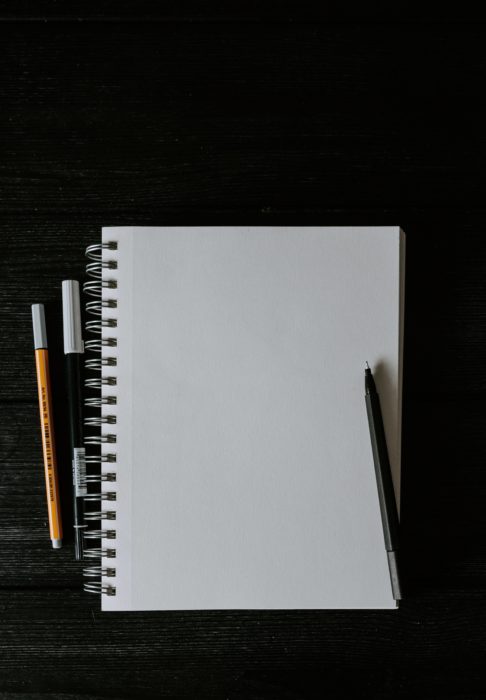
2. Lined paper
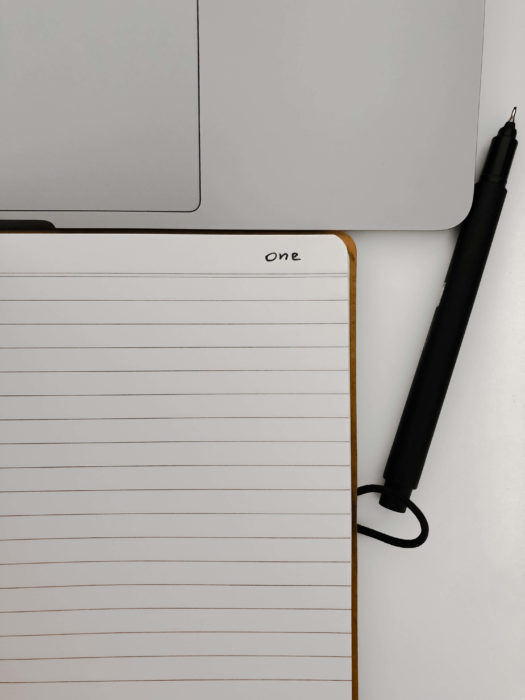
3. Grid paper/ Graph paper
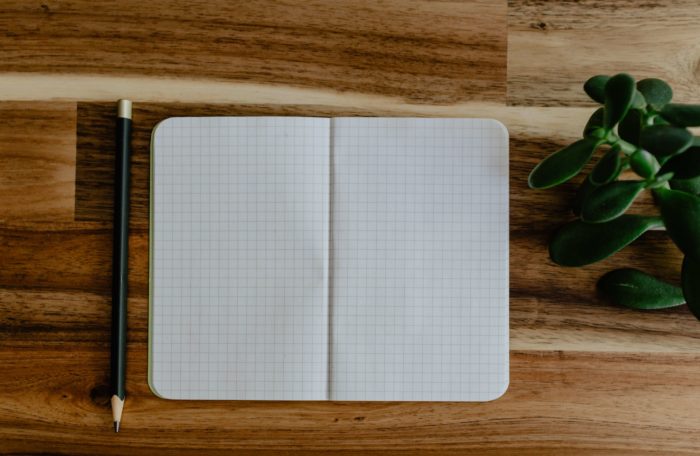
4. Bulleted or dotted paper

When buying your writer’s notebook think about the type of notebook paper that will suit you best. Which kind of paper is best for your story development?
With paper material, the list can go on and on. But do consider the quality of the notebook’s paper.
Is the paper durable? Would it rip easily during turning? How does it handle pen, marker, and highlighter ink? How does it fold, in the case that you would need to fold a page? Is it easy to rip out a sheet of paper ( whether on purpose or by accident? And so on.
The paper material type may seem like something small or unnecessary. But I have bought notebooks with poor paper quality which affected how much I used the book and how I wrote in it. I’ve had a notebook with paper that ripped super easily and one whose paper didn’t take pencil lead very well.
Good thing it only takes seconds to flip through a notebook and its review paper quality.
5. Storage or No Storage
Storage is definitely one of my favorite things to consider.
I didn’t know I needed storage until had a notebook that came with a little zippable pouch attached to the cover flap. It was honestly amazing. I usually kept a pen and some index cards in there. Its cover was faux leather so the little pocket stayed in great shape the whole time I had it.
Notebook storage is optional. But can come in extremely handy. Based on your writing needs think about the kind of notebook storage you may need. Storage could be a little pocket or space to hold your pen.
2 Bonus Considerations
Book mark or no bookmark
I think that an attached bookmark is a sort of notebook luxury. Some books from all price ranges have bookmarks. So think about whether you need a bookmark for your notebook.
Where Do You Write
Do not forget to consider where you write. Do you write at home, outside, on the train, in a coffee shop, or anywhere on the go?
Considering the kinds of conditions the notebook will face as you use it will help you pick one that can withstand its environment and last long.
My Writer’s Notebook
I just bought my writer’s notebook last week and so far I am pretty happy with my choice. After considering the 5 main things +, I picked a faux leather bullet journal as my writer’s notebook. The notebook comes with pen storage and a string bookmark. It’s a small/medium-sized book that is moderately thick.
It can easily fit into all my bags and I can bend the cover and pages for more comfortable writing. It takes pen ink nicely and the pages have decent quality. I bought it from Burlington for around $5, which is a steal. The notebook is good quality, cheap, and satisfies my notebook needs. So a win.
The Perfect Writer’s Notebook
Is there such a thing as the perfect writer’s notebook? Yes. But that perfect notebook will look different for each writer. All writers write differently, in different environments, and under different circumstances. So consider any and everything you need to consider so that you can pick the best notebook for you and your stories.
Notebooks don’t last forever and they can be switched out and recycled. So if things don’t work out because you’re not sure about the things you need in a notebook or you just picked the wrong book, it’s okay.
A writer’s notebook is so helpful with story development and daily writing. Unlike Google docs, I won’t need an internet connection or a charger, and I won’t get distracted by notifications and such. While it may not be for everyone, I do recommend that writers and poets have one. But when you do buy your writer’s notebook just don’t forget to consider things that’ll make your writer’s notebook perfect for you.
Don’t just be a good writer, be a great one!
Until my next words (on here that is),
Christa


